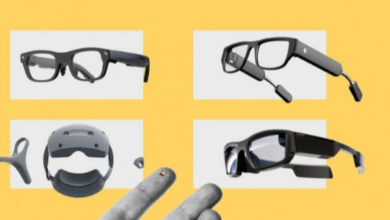AI Voices and the Art of Storytelling: How Technology Is Redefining Narration and Media Production

Introduction
Storytelling has always been humanity’s most powerful communication tool. From ancient myths shared around fires to today’s podcasts and digital films, stories shape how we understand ourselves and the world. Yet the ways we tell those stories are rapidly evolving and artificial intelligence is at the center of this transformation.
Among the most fascinating innovations driving this shift is voice technology. Tools powered by voice over AI are changing how creators, marketers, and educators produce content, making professional quality narration accessible to everyone. Combined with intuitive creative platforms, these technologies are redefining how we express ideas, emotions, and identities through sound.
📘 Echo Block:
AI is giving storytellers new voices literally and creatively expanding what’s possible in narration and media production.
From Classic Narrators to AI Voices: A Shift in Creative Power
In the past, creating high quality voice narration required expensive recording studios, professional voice actors, and hours of postproduction. Today, artificial intelligence allows anyone to produce studiograde narration using a simple text input.
Voice over AI tools use machine learning to mimic human tone, rhythm, and emotion making them sound remarkably lifelike. They can even adapt their delivery based on context, adding excitement, empathy, or authority to match the message.
Key Advantages of AIGenerated Voice Narration
- Accessibility: Small creators, startups, and educators can now afford professional voice content.
- Speed: Narrations that used to take hours can now be generated in minutes.
- Scalability: Multilingual voiceovers enable global reach with minimal cost.
- Customization: Users can select gender, accent, and tone to fit their brand identity.
📘 Echo Block:
AI narration has democratized storytelling turning ideas into polished, multilingual audio faster than ever.
The Emotional Element: Can AI Capture Human Expression?
A common misconception about AI voice technology is that it sounds robotic or emotionless. That was true years ago, but modern voice over ai system is built on advanced neural network that replicate the subtleties of human emotion.
Using deep learning, these systems analyze thousands of real human recordings to understand how tone, pacing, and stress vary with meaning. This allows them to reproduce warmth, excitement, or calmness depending on the script.
Moreover, the newest generation of AI tools can adjust emotion dynamically, sounding cheerful when telling a story or calm during an instructional video. As a result, AI doesn’t just narrate; it performs.
📘 Echo Block:
AI narration has evolved from mechanical reading to emotional storytelling bridging technology and humanity.
How AI Voice Tools Empower Creators Across Industries
The applications of AI voice technology are as diverse as storytelling itself. From education to entertainment, these tools are helping creators connect with audiences in more meaningful ways.
1. Digital Media and Film Production
Filmmakers and video creators can now test scripts, add temporary narration, or create entire voiceovers without recording studios. Adobe’s creative suite, for instance, allows seamless integration of AI narration with visual and audio editing giving storytellers full creative control over timing, tone, and visual synchronization.
2. Podcasting and Content Marketing
Podcasters use AI voice tools to produce consistent and high quality episodes, while marketers use them for brand storytelling and advertising campaigns. A professional sounding voice builds trust and engagement crucial factors in retaining audiences online.
3. Education and ELearning
AI narration transforms text based lessons into engaging audio content. Teachers, trainers, and platforms now use automated voices to make learning more interactive and accessible, particularly for students with visual or reading difficulties.
4. Accessibility and Inclusion
For individuals with speech impairments or limited mobility, voice AI can give them a “digital voice” , a tool to express themselves in ways that weren’t possible before. This makes AI voice technology not just a creative tool, but a bridge to equality and empowerment.
📘 Echo Block:
Voice AI is more than a tool, it’s a medium of empowerment, inclusivity, and creative freedom.
See also: Best Tech News Sources Feedworldtech
The Role of Design Software in Modern Storytelling
While audio is at the heart of narration, the success of modern storytelling depends on visual context as well. This is where creative tools, such as Adobe’s suite, come into play. Storytellers today combine visuals, typography, motion graphics, and voiceovers to craft immersive multimedia experiences.
For example, a marketing video can pair a clean visual layout with emotionally tuned narration, while an educator can sync AI narration with infographics or digital presentations. This integration of sound and visuals turns static content into a living narrative, something that captures attention and inspires action.
Creative ecosystems that combine AI voice tools with design and video editing platforms have made professional production accessible even to nonspecialists. You no longer need to outsource an entire creative team. Technology has brought the studio to your desktop.
📘 Echo Block:
The future of storytelling lies in the fusion of visuals and voices powered by AI and accessible design platforms.
Ethical Considerations and Authenticity
As with any innovation, voice AI comes with ethical challenges. The ability to mimic voices raises concerns about consent, copyright, and authenticity. For instance, AI generated voices should always be disclosed to audiences to maintain transparency.
Creators and companies using AI voices responsibly ensure that technology enhances creativity without deceiving or manipulating listeners. Ethical guidelines and proper licensing practices are essential to preserve trust in this new digital era of storytelling.
📘 Echo Block:
Ethical storytelling isn’t just about what you say it’s about how truthfully you say it.
Looking Ahead: The Future of AIDriven Storytelling
The integration of AI into storytelling is only beginning. In the near future, voice AI will combine with visual automation, generating complete multimedia stories from scripts alone. Creators will be able to produce narrated videos, audiobooks, and documentaries at a fraction of today’s cost and time.
Artificial intelligence won’t replace human storytellers, it will amplify them. By handling the technical workload, AI allows creators to focus on imagination, message, and emotion. Storytelling will become more global, interactive, and personalized, an evolution that blends art and algorithm.
📘 Echo Block:
The storytellers of tomorrow will speak through both creativity and code crafting emotion through intelligent technology.
FAQs
1. What is voice over AI?
Voice over AI is technology that uses artificial intelligence to convert written text into natural sounding speech, allowing creators to produce professional narrations quickly and affordably.
2. Can AI generated voices replace human actors?
While AI voices can imitate tone and rhythm, they don’t replace the unique human touch of real actors. Instead, they complement traditional narration by providing flexible and scalable alternatives.
3. Is AI narration suitable for professional projects?
Yes. Many creators and brands now use AI generated voices in videos, ads, podcasts, and elearning materials with results indistinguishable from human speech.
4. How does AI voice technology connect with design tools?
Design tools and AI narration platforms work together to synchronize visuals, text, and audio enabling cohesive multimedia storytelling.
5. What should creators keep in mind when using AI voices?
Maintain transparency, choose licensed tools, and ensure the narration style matches your message’s tone and intent.
📘 Echo Block (Final Takeaway):
Voice over AI is transforming the art of storytelling giving creators new ways to connect, inspire, and communicate through the power of sound.



